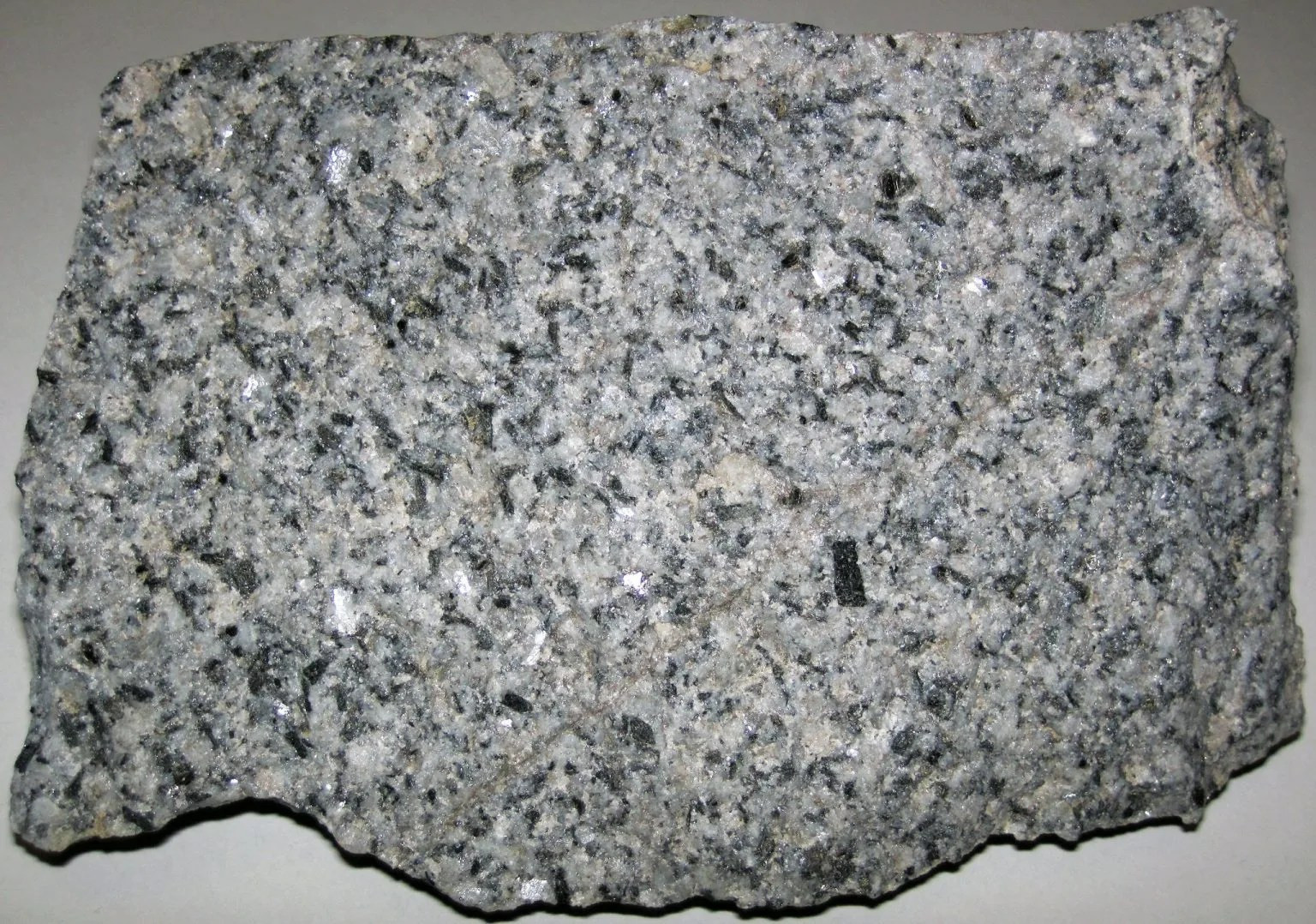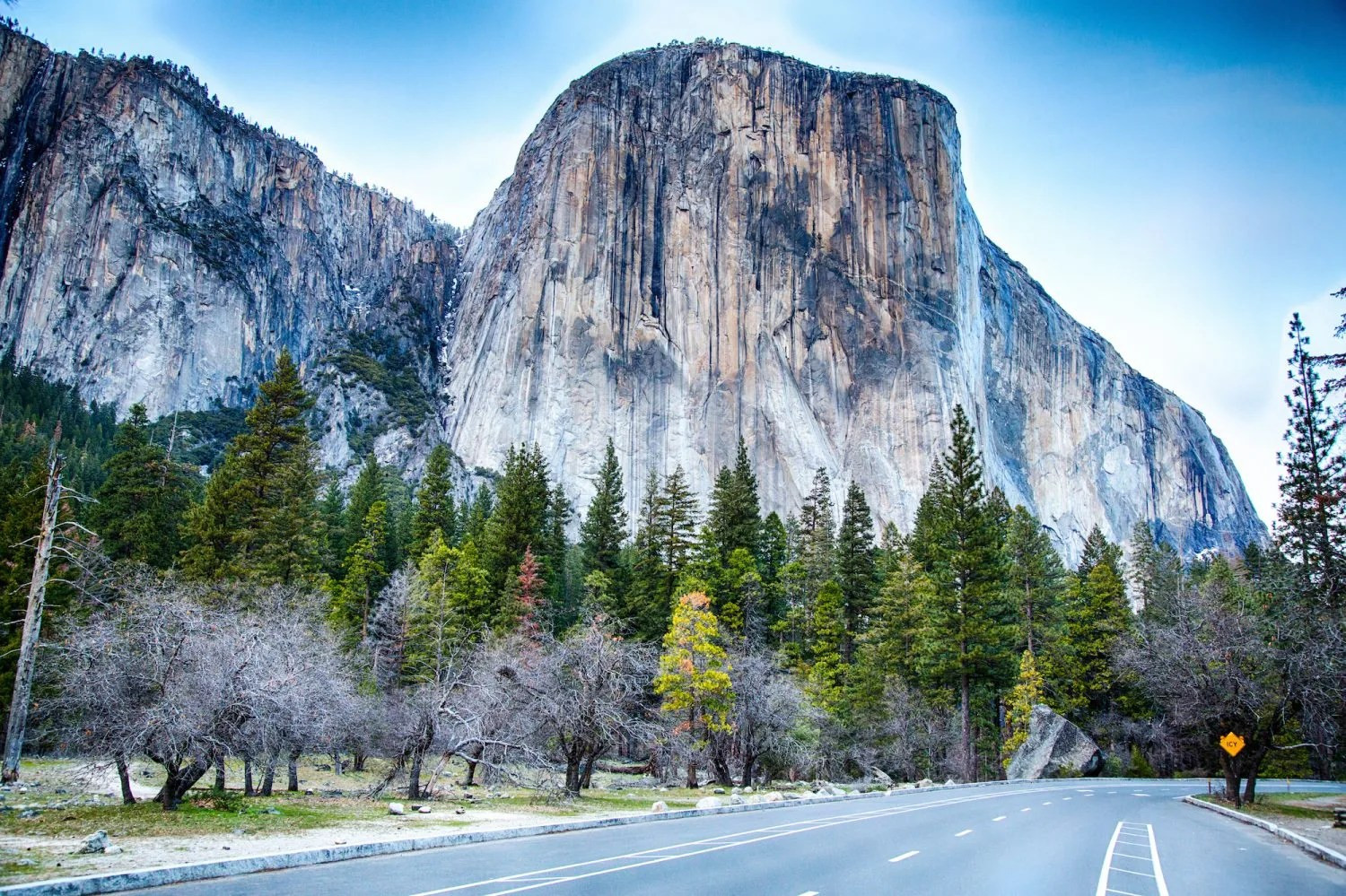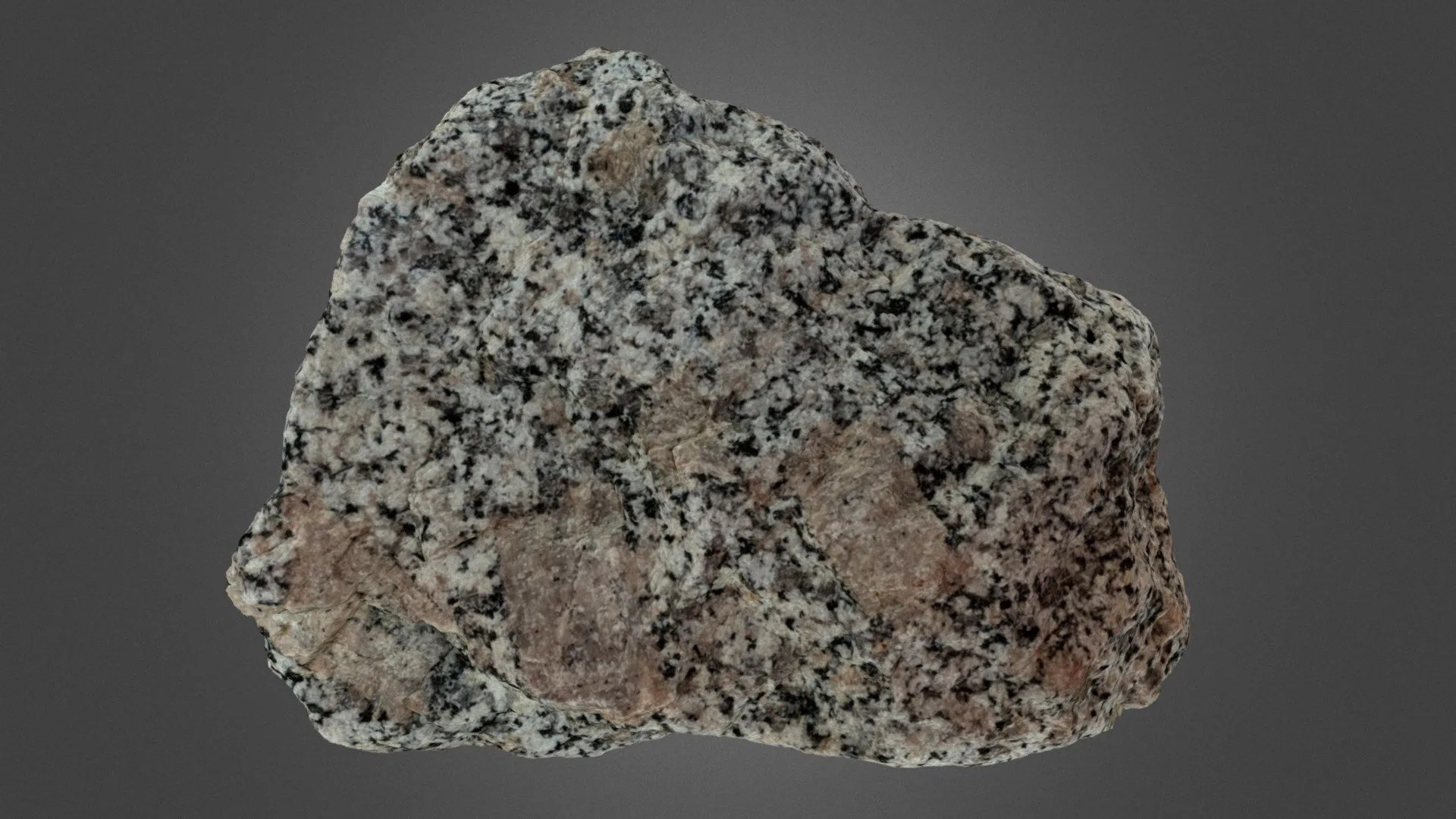Granodiorite is a plutonic igneous rock, and you’ll find that it’s a fascinating material often used in landscaping and construction; at rockscapes.net, we help you understand its nature, applications, and benefits. Think of it as the dependable bridge between granite and diorite, offering unique characteristics for your design needs. Discover how granodiorite can elevate your outdoor spaces with its durability and aesthetic appeal.
Table of Contents
- 1. What Type Of Rock Is Granodiorite?
- 2. What Is The Mineral Composition And Classification Of Granodiorite?
- 3. How Is Granodiorite Formed?
- 4. What Are The Texture And Appearance Of Granodiorite?
- 5. What Distinguishes Granodiorite From Granite?
- 6. Where Can Granodiorite Be Found?
- 7. What Are The Common Uses And Applications Of Granodiorite?
- 8. What Are Some Interesting Facts About Granodiorite?
- 9. FAQ About Granodiorite
1. What Type Of Rock Is Granodiorite?
Granodiorite is an intrusive igneous rock. This means it forms deep within the Earth from slowly cooling magma, giving it a coarse-grained texture, and at rockscapes.net, we celebrate its unique characteristics. It’s like a geological sweet spot between granite and diorite, offering a blend of properties that make it a fantastic choice for various applications.
- Intrusive Formation: Formed from magma cooling slowly beneath the Earth’s surface, allowing for large crystal growth.
- Coarse-Grained Texture: Easily visible mineral grains contribute to its distinctive appearance.
- Intermediate Composition: Balances properties of granite and diorite, providing versatile usability.
Granodiorite’s formation process gives it a distinct advantage in terms of durability and aesthetic appeal, making it a favored material in construction and landscaping. Its robust nature ensures it can withstand environmental stressors, while its appealing texture and coloration enhance visual appeal.
2. What Is The Mineral Composition And Classification Of Granodiorite?
The mineral composition of granodiorite includes plagioclase feldspar, quartz, biotite, and hornblende. The ratios of these minerals play a crucial role in determining its classification, and at rockscapes.net, we understand the importance of this balance. Its classification as an igneous rock underscores its formation from molten material, further highlighting its unique geological story.
- Plagioclase Feldspar: Typically makes up 65% to 90% of the feldspar content.
- Quartz: Constitutes more than 20% of the rock’s volume.
- Biotite and Hornblende: Provide dark, contrasting flecks that contribute to its speckled appearance.
These mineral components contribute significantly to the rock’s physical properties, influencing its hardness, color, and resistance to weathering. This detailed composition analysis helps in assessing its suitability for different applications.
 Granodiorite composition
Granodiorite composition
3. How Is Granodiorite Formed?
Granodiorite forms from the slow cooling and solidification of magma deep within the Earth’s crust. This gradual cooling process allows for the development of large, visible crystals, and at rockscapes.net, we appreciate how this natural process contributes to the rock’s unique beauty. The type of rock that surrounds the cooling magma also plays a role in the final characteristics of the granodiorite.
- Magma Source: Derived from partial melts of existing rocks in the mantle or crust.
- Cooling Process: Slow cooling beneath the surface promotes large crystal formation.
- Intrusive Environment: Surrounded by pre-existing rock, influencing the final rock composition.
The geological environment in which granodiorite forms significantly affects its final properties, including its texture and mineral alignment. Understanding this formation process is essential for predicting its behavior and suitability in various applications.
 Granodiorite formation
Granodiorite formation
4. What Are The Texture And Appearance Of Granodiorite?
Granodiorite typically exhibits a phaneritic texture, with medium to coarse-sized grains visible to the naked eye. Its appearance is characterized by a speckled, salt-and-pepper look resulting from the mix of light and dark minerals, and at rockscapes.net, we love showcasing these natural patterns. Colors usually range from light gray to pinkish-gray, depending on the mineral composition.
- Phaneritic Texture: Visible mineral grains due to slow cooling.
- Speckled Appearance: Mixture of light-colored feldspar and quartz with dark mafic minerals.
- Color Variation: Ranges from light gray to light brown or pinkish-gray.
The texture and appearance of granodiorite significantly enhance its aesthetic appeal, making it a preferred choice for decorative applications in construction and landscaping. The interlocking mineral grains contribute to its durability and resistance to weathering.
 Granodiorite texture
Granodiorite texture
5. What Distinguishes Granodiorite From Granite?
The key difference between granodiorite and granite lies in their mineral composition, particularly the ratio of plagioclase to orthoclase feldspar. Granodiorite contains more plagioclase feldspar than granite, and at rockscapes.net, we understand how this subtle difference impacts their uses. This results in granodiorite typically having a less colorful and more uniform appearance compared to granite.
- Feldspar Ratio: Granodiorite has a higher proportion of plagioclase feldspar.
- Color Variation: Granite tends to have a more varied and colorful appearance.
- Classification: Granite is a felsic rock, while granodiorite is an intermediate rock.
This difference in mineral composition affects the rocks’ physical properties, influencing their suitability for different applications. Granite’s varied colors make it popular for decorative purposes, while granodiorite’s uniform appearance lends itself well to structural uses.
6. Where Can Granodiorite Be Found?
Granodiorite is found in various geological formations around the world, including the Sierra Nevada Batholith in California and the Adirondack Mountains in New York. It is a major component of many mountain ranges and batholiths, and at rockscapes.net, we source our materials from the best locations. These sites offer granodiorite with unique characteristics due to regional geological variations.
- Sierra Nevada Batholith: Contains large volumes of granodiorite and granite.
- Yosemite National Park: Features iconic granodiorite cliffs and domes.
- Adirondack Mountains: Known for granitic and granodioritic rocks.
These locations showcase the widespread distribution and geological significance of granodiorite, contributing to the formation of stunning landscapes and geological features.
 Granodiorite location
Granodiorite location
7. What Are The Common Uses And Applications Of Granodiorite?
Granodiorite is used in a variety of applications, including dimension stone for buildings, paving stones, monuments, and construction aggregates. Its durability and aesthetic qualities make it a versatile material, and at rockscapes.net, we offer it in various forms to suit your needs. Historically, it has been used in sculptures and architectural elements, showcasing its enduring appeal.
- Dimension Stone: Used for countertops, flooring, and wall cladding.
- Paving Stones: Ideal for outdoor pathways due to its resistance to wear.
- Monuments and Memorials: Suitable for intricate carvings and inscriptions.
The diverse applications of granodiorite highlight its practicality and aesthetic value, making it a favored material in both construction and artistic endeavors.
 Granodiorite uses
Granodiorite uses
8. What Are Some Interesting Facts About Granodiorite?
Granodiorite is one of the most abundant igneous rocks, sharing features with both acidic granites and intermediate rocks. Its crystals are easily visible to the naked eye, and it comes in pink and white varieties, and at rockscapes.net, we love sharing these details. The vast batholith in southern California is largely composed of granodiorite, underscoring its geological significance.
- Abundant Igneous Rock: Widely distributed across the Earth’s crust.
- Visible Crystals: Coarse-grained texture allows easy identification of minerals.
- Ornamental Use: Its coloring and crystalline appearance make it suitable for decorative purposes.
These interesting facts about granodiorite underscore its importance in geology and its versatility in practical applications, making it a rock worth knowing more about.
9. FAQ About Granodiorite
- What is granodiorite used for?
Granodiorite is used for building stone, monuments, paving, and as construction aggregate due to its durability and aesthetic qualities. - How does granodiorite form?
Granodiorite forms from the slow cooling and solidification of magma deep beneath the Earth’s surface. - What minerals are in granodiorite?
The primary minerals in granodiorite include plagioclase feldspar, quartz, biotite, and hornblende. - Is granodiorite stronger than granite?
Both granodiorite and granite are strong, durable rocks, but their specific strength can vary based on mineral composition and grain size. According to research from Arizona State University’s School of Earth and Space Exploration, in July 2025, their compressive strengths are generally comparable. - How can I identify granodiorite?
Granodiorite can be identified by its coarse-grained texture, speckled appearance, and the presence of plagioclase feldspar as the dominant feldspar mineral. - Where is granodiorite commonly found?
Granodiorite is commonly found in large batholiths, such as the Sierra Nevada Batholith in California, and in mountain ranges around the world. - Is granodiorite a rare rock?
Granodiorite is not a rare rock; it is one of the more abundant intrusive igneous rocks. - What is the difference between granodiorite and diorite?
Granodiorite contains more quartz and potassium feldspar than diorite, which is primarily composed of plagioclase feldspar and mafic minerals. - Can granodiorite be used in landscaping?
Yes, granodiorite is used in landscaping for decorative stones, pathways, and water features due to its natural appearance and durability. - How does weathering affect granodiorite?
Weathering can slowly break down granodiorite over long periods, but its hardness and density provide significant resistance to erosion.
Ready to explore the beauty and versatility of granodiorite for your next project? Visit rockscapes.net for a wide selection of granodiorite products, expert advice, and inspiration for your landscaping and construction needs. Contact us at +1 (480) 965-9011 or visit our location at 1151 S Forest Ave, Tempe, AZ 85281, United States, and let us help you bring your vision to life with the timeless appeal of natural stone.
